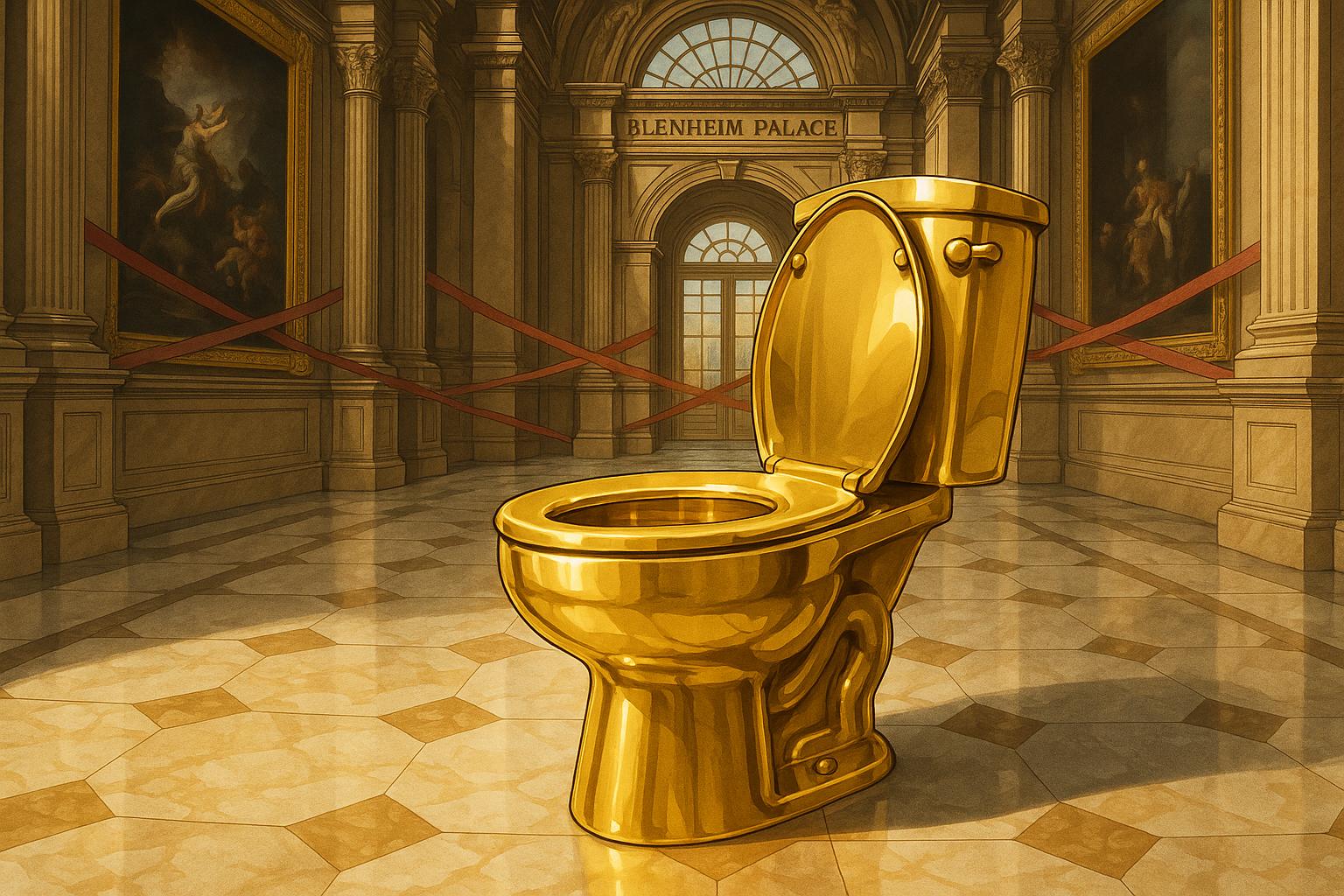A British man who attempted to facilitate the sale of a stolen golden toilet, valued at £4.74 million, has received a suspended prison sentence after a judge expressed leniency, noting that he had been manipulated by the actual thieves. Frederick Doe, also known as Frederick Sines, was sentenced at Oxford Crown Court for his involvement in the daring theft that occurred at Blenheim Palace, the birthplace of Winston Churchill, in September 2019.
The toilet, created by Italian artist Maurizio Cattelan, was part of an art installation titled "America," a provocative piece designed to critique ostentatious wealth. Its theft was not only audacious but also damaging, as the act caused significant flooding and destruction within the historical premises. The installation had previously attracted attention while on display at The Guggenheim Museum in New York, where it once garnered interest from former President Donald Trump, who had requested a Van Gogh but was instead offered the toilet.
During the court proceedings, Judge Ian Pringle remarked on the nature of the crime, stating that those involved had aimed to swiftly profit from their illicit gains, with Doe unwittingly aiding this effort. While Doe claimed ignorance regarding the stolen status of the toilet, he was found guilty of conspiracy to transfer criminal property. He received a suspended two-year sentence, along with an order to complete 240 hours of community service.
The theft has spurred ongoing legal consequences for multiple individuals involved in the case. In November 2023, four men were charged with various offences related to the heist, including burglary and conspiracy to transfer criminal property. The police suspect that the stolen toilet was melted down shortly after its disappearance, adding a layer of intrigue to the case that has captivated the public's interest for years. The men were scheduled to appear at Oxford Magistrates' Court, continuing a legal saga that speaks to the challenges of securing valuable art in historical venues.
The case highlights not only the audacity of such a theft but also the socio-economic issues it encapsulates. Blenheim Palace, a UNESCO World Heritage site, is home to priceless artwork and furniture, attracting numerous visitors annually. The incident prompted scrutiny over the palace’s security measures, with some calling for a reevaluation of how such venues protect their treasures.
For Doe, the toll of his association with the crime is palpable. Emerging from court, he expressed regret, asserting that he is fundamentally a good person who became involved in something detrimental. His dismissal of the moral implications illustrates a troubling disconnect felt by some caught in the crossfire of criminal enterprises—an idea that resonates in conversations surrounding crime and punishment.
As the story unfolds, the art world's intersection with crime continues to captivate, bearing testament to the unpredictability and peril that can arise within the realm of high-value art. In a world where the distinction between admiration for art and the criminal allure of its value can blur, the saga of the golden toilet remains a provocative commentary on modern society's relationship with wealth and art.
Reference Map:
- Paragraph 1: [1]
- Paragraph 2: [1], [3], [4], [6], [7]
- Paragraph 3: [2], [4]
- Paragraph 4: [2], [3], [5]
- Paragraph 5: [1], [7]
- Paragraph 6: [1], [4]
- Paragraph 7: [1], [3]
Source: Noah Wire Services
